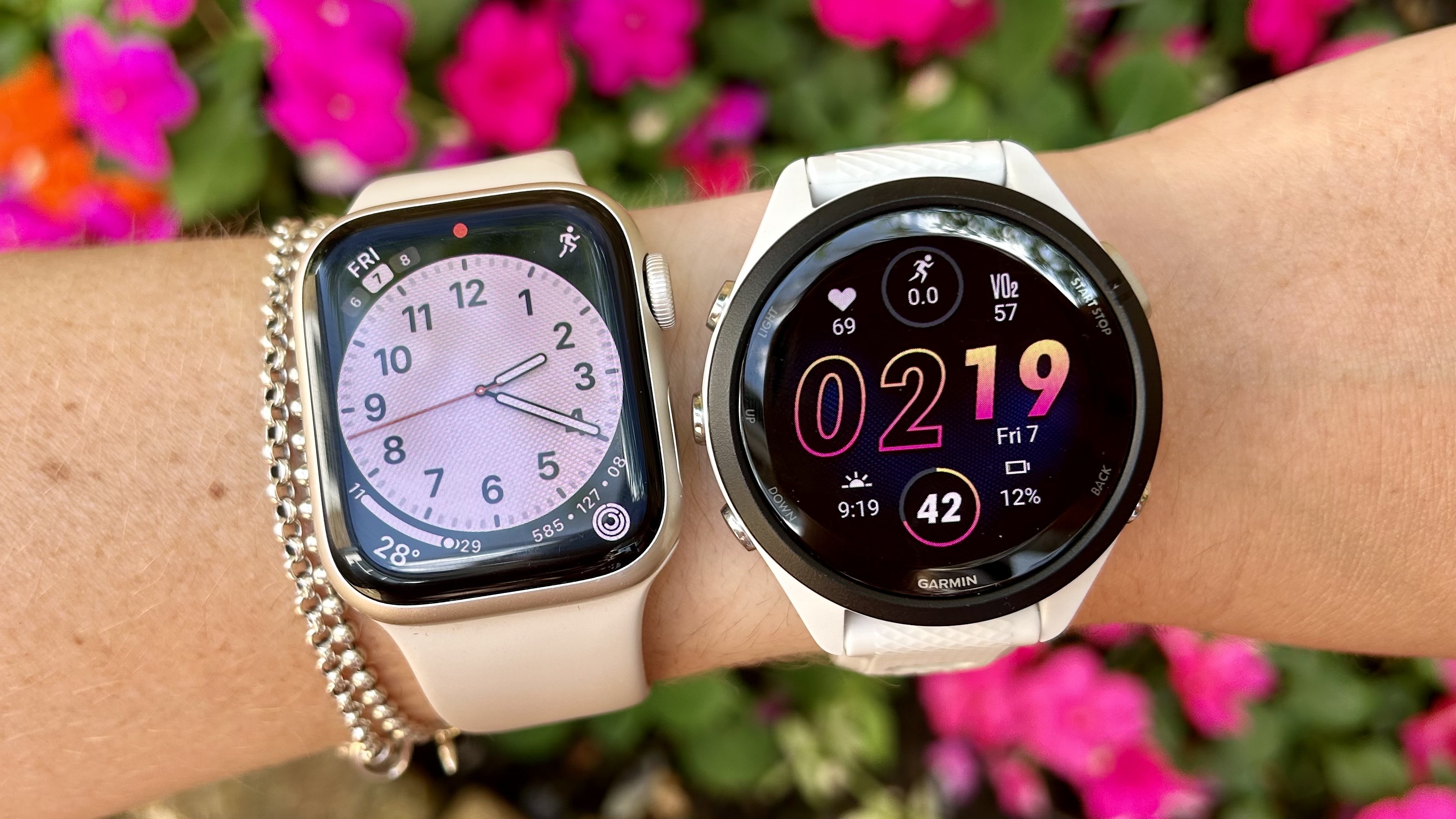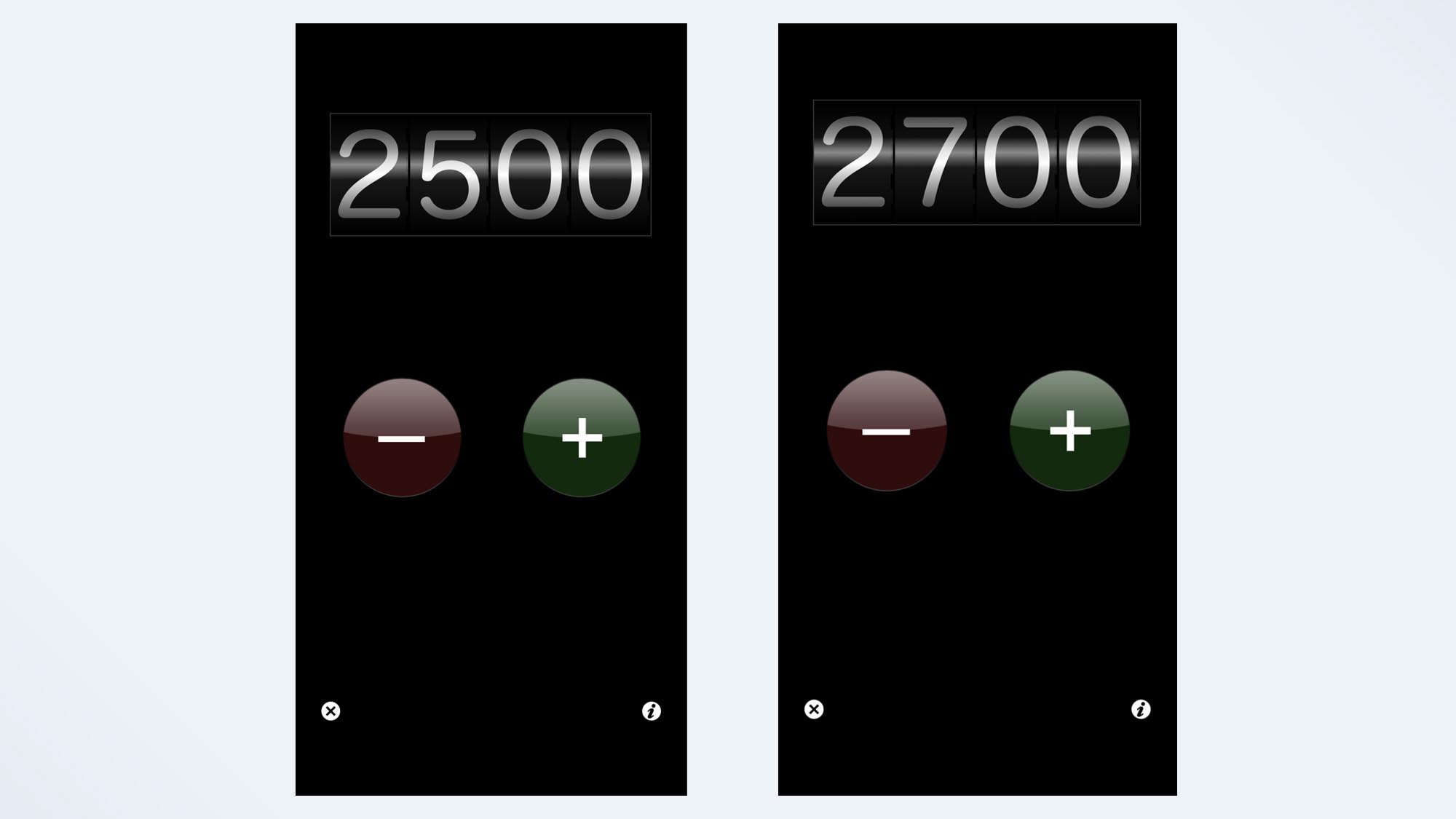I walked 5000 steps with the Apple Watch 8 and Garmin Forerunner 265 — and one was way more accurate
I put these two popular watches to the test

Ever wondered whether Apple or Garmin is more accurate when it comes to counting your steps? After putting the two brands head to head at the London Marathon, I turned my attention to finding out more about the step-counting capabilities of both watches. To find out more, I strapped the Apple Watch Series 8 and the Garmin Forerunner 265 to my wrist, and manually counted my steps to see how the two watches compared. One was a lot more accurate than the other — read on to find out which took the crown.
Let’s start by taking a look at how the best fitness trackers on the market count your steps. Both the Apple Watch Series 8 and the Garmin Forerunner 265 track how many steps you’ve taken by using an internal accelerometer, which measures the swing of your arm. Each swing counts for two steps. It doesn’t matter whether you wear your watch on your dominant or non-dominant hand, or whether you’re walking with your hands in your pockets, or holding something, the accelerometer should still measure your body’s movement.
I walked 5,000 steps with the Apple Watch 8 and Garmin Forerunner 265 — and one was way more accurate
For this test, I did two walks of around 2,500 steps. On my first attempt to write this article, I lost count of my steps waiting to cross the road about 500 meters from my house, so I decided to use a manual counter instead. As I knew I’d never find a use for a clicker counter, I compromised and downloaded the Tally Counter app on my iPhone. Holding my phone in one hand and my coffee cup in the other, I walked along, manually clicking every time I took a step.
The first walk I did was 2,500 steps exactly, measuring 1.19 miles, taking me 20 minutes and 57 seconds. A couple of hours later, I walked another 2,700 steps (I forgot to stop at 2,500), which measured 1.14 miles and took 22 minutes and 7 seconds.
Next, I downloaded the data from my Garmin Forerunner 265, and then spent about two hours trying to figure out how to view my activity steps on the Apple Watch. While Apple likes to give you a running total of your daily steps, they make it impossible to view your actual steps taken in a recorded activity, unless you download a third-party app. In the end, I managed to upload the .gpx files from Apple to an app called Run Gap.

Here’s the difference between the two watches:
Walk one
- Manual recording: 2,500 steps
- Garmin Forerunner 265: 2,516 steps
- Apple Watch Series 8: 2,453 steps
Walk two
- Manual recording: 2,700 steps
- Garmin Forerunner 265: 2,710 steps
- Apple Watch Series 8: 2,548
Total
- Manual recording: 5,200 steps
- Garmin Forerunner 265: 5,226 steps
- Apple Watch Series 8: 4,996 steps
So, as you can see from the data, the Apple Watch was about 200 steps out, and the Garmin Forerunner 265 rounded up by about 26 steps. Of course, to truly test the accuracy of the two watches, you’d need to do a lot more testing on a much bigger scale, but I was impressed at how pretty much spot-on the Forerunner 265 was.
Sign up to get the BEST of Tom's Guide direct to your inbox.
Get instant access to breaking news, the hottest reviews, great deals and helpful tips.
As a reminder, fitness trackers do a lot more than just tracking your steps, and counting steps alone isn’t the best metric when it comes to getting fitter and losing weight. That said, it’s a good place to start. While that the target of 10,000 steps began as a piece of marketing in 1965 by a Japanese company that was about to introduce a device called a Manpo-kei (it means 10,000-steps meter), it is a useful goal — a review of 32 studies, published in the International Journal of Behavioral Nutrition and Physical Activity found that “10,000 steps/day is a reasonable target for healthy adults.”
However you choose to track your steps, there are a number of benefits of walking more, including losing weight, building muscle, and feeling less stressed. Here’s what 30-minutes of walking each day can do for your body.
More from Tom's Guide

Jane McGuire is Tom's Guide's Fitness editor, which means she looks after everything fitness related - from running gear to yoga mats. An avid runner, Jane has tested and reviewed fitness products for the past five years, so knows what to look for when finding a good running watch or a pair of shorts with pockets big enough for your smartphone. When she's not pounding the pavements, you'll find Jane striding round the Surrey Hills, taking far too many photos of her puppy.
-
tcg101 So, for the 2nd walk, you took more steps, took longer to do it AND walked a shorter distance?Reply -
brucemitchell821 Reply
Tho I'm not an Apple fanboy, I do think you should conduct a more scientific and disciplined test in the future. Forgetting to stop and not taking the exact same route for verification of data is just not the type of report to be taken with more than a few grains of salt.admin said:I walked 5000 steps with the Apple Watch 8 and Garmin Forerunner 265 — here's which was more accurate
I walked 5000 steps with the Apple Watch 8 and Garmin Forerunner 265 — and one was way more accurate : Read more -
PixelAdventure This truly feels like a disingenuous article. The first walk you did the Apple Watch was closer in its step count, while in the second walk the Garmin walk was significantly more accurate. With this being the case, this was enough to put together an article with these findings, that ultimately drive the idea that the Garmin product is more accurate, with next to zero due diligence. I get it. I know you’re required to write hundreds of articles for this site, and these articles do come under a somewhat puff piece comparison. It’s just a little bit sloppy.Reply -
JayBofMA I spent too many hours in labs as a student to take the results of this "test" with a grain of salt. I imagine neither Apple nor Garmin is particularly pleased, either.Reply
All that I can conclude is that the methodology fails to test the hypothesis.
